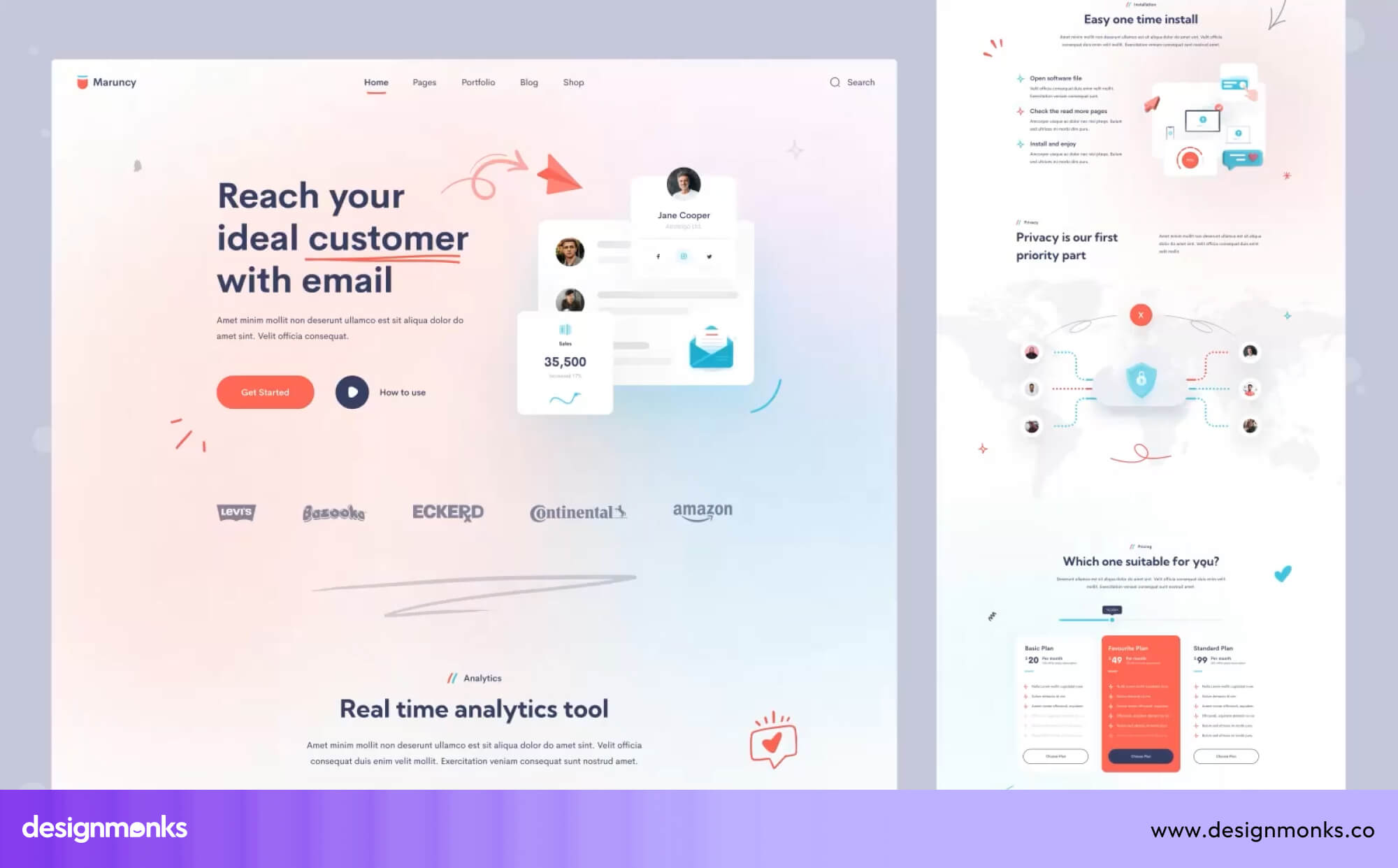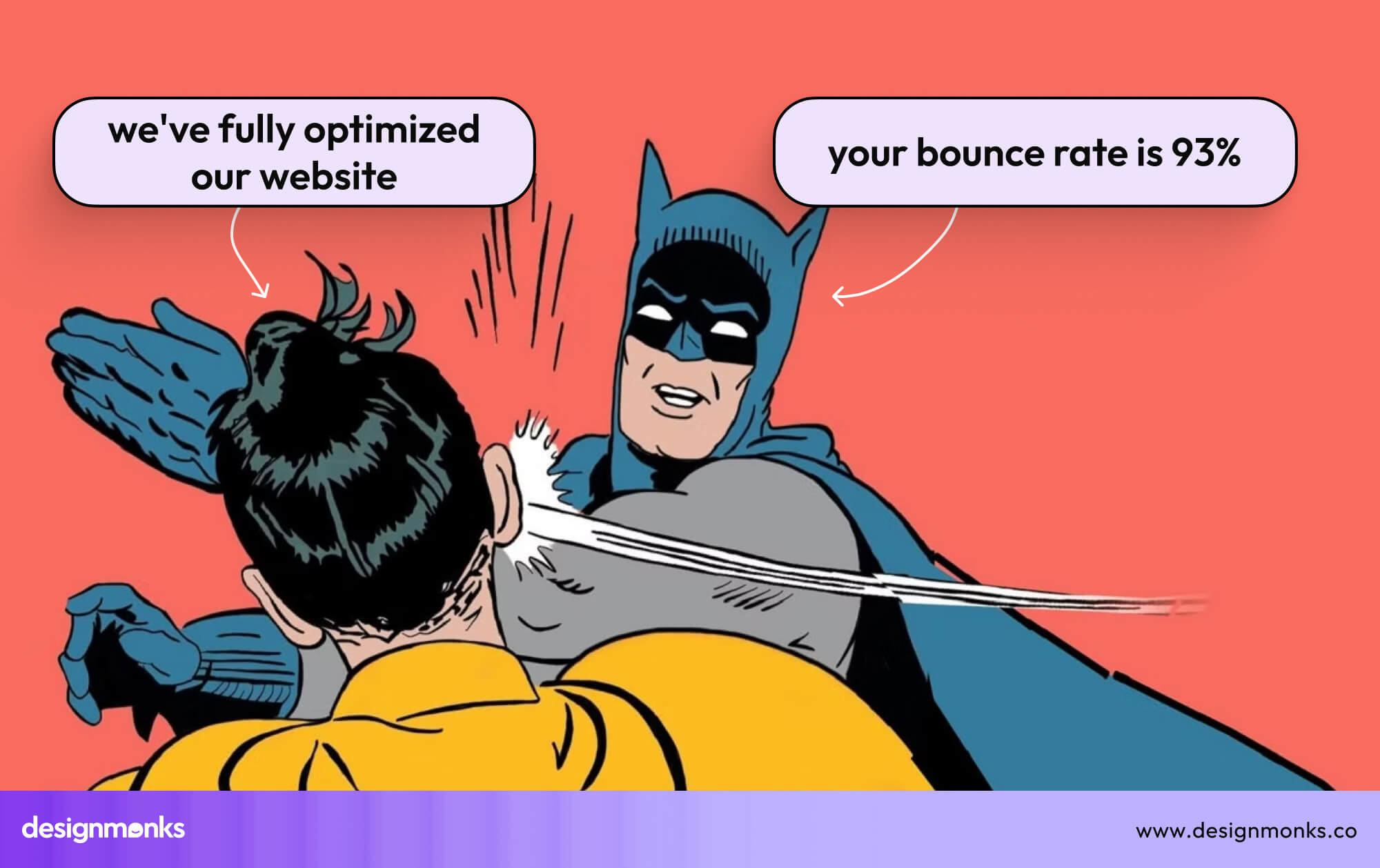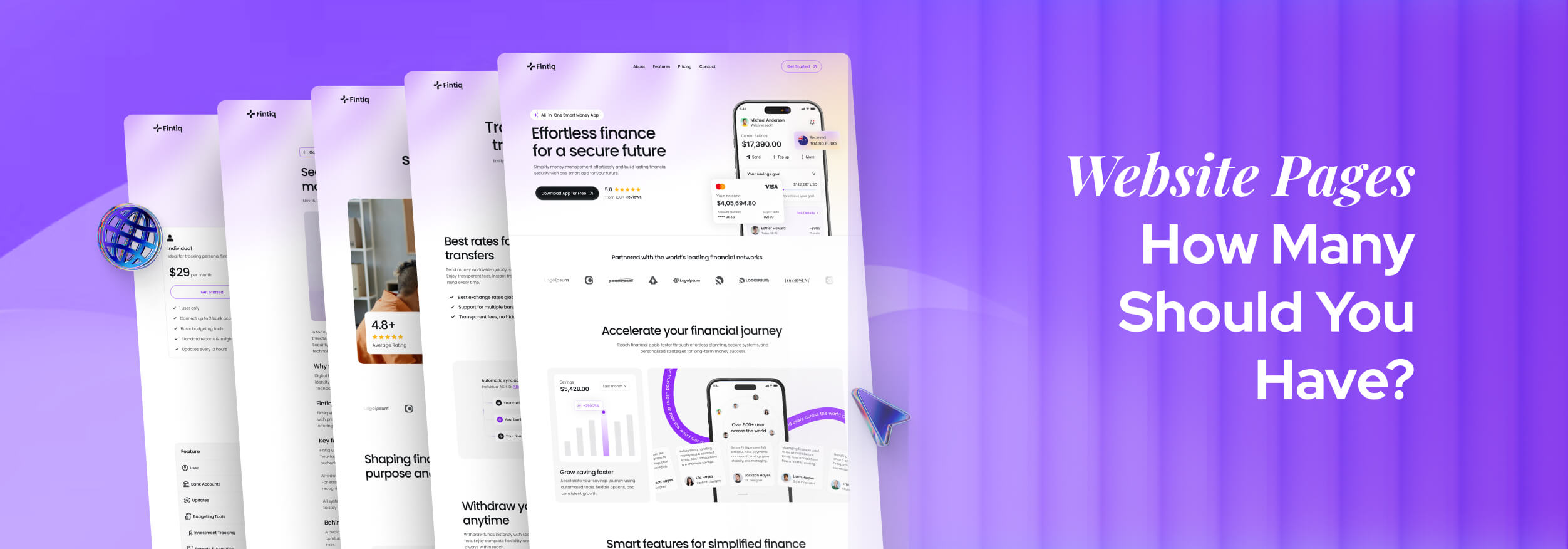
Key Takeaways
- The right website page count balances smooth navigation, SEO, and user clarity.
- Small service websites perform best with around 8–15 well-planned pages.
- Each page should have a clear purpose and guide user actions.
- Too few or too many pages hurt usability, speed, and engagement.
- Quality, structure, and purpose matter more than the total page number.
Knowing how many pages a website should have can make or break its success. For small service businesses and design agencies, the right number of pages helps users find what they need easily, without feeling lost or overloaded.
A website isn’t just a digital presence, it’s a guided journey. Each page should serve a clear purpose. From showcasing your services to helping clients reach you easily, every page should stay simple and user-friendly.
Too few pages can leave users guessing, while too many can drive them away. Finding the right balance is the secret to a website that works beautifully. Keep reading to discover how to plan the perfect page count for your site.
Why the Question Matters for UI/UX and SEO?
The question “How many pages should a website have?” may seem simple, but it strongly affects how users interact with your site. In UI/UX design, the number of pages directly shapes how smoothly people move through your content.

When a website has too few pages, users might struggle to find detailed information. If it has too many, they can get overwhelmed and ultimately cause a user pain point. A well-organised website architecture helps visitors navigate quickly and clearly.
Page count also matters for search engine optimisation (SEO). Search engines like Google analyse how your pages connect through internal linking. When these links are logical and consistent, it becomes easier for search engines to understand your content and rank it higher. A cluttered or unplanned structure, on the other hand, can reduce both user satisfaction and search visibility.
Deciding how many pages your website should have is not just about design. It’s a strategic choice that affects user experience, discoverability, and how professional your brand appears online.
No Magic Number: Contextual Factors That Influence Webpage Count
There is no fixed number of pages that every website should have. The ideal structure depends on your business goals, industry type, content strategy, and audience needs.
If your goal is to generate leads, your website might need separate pages for services, case studies, and testimonials to support conversion. For a product-focused business, category and detail pages will naturally increase the total count.
Your industry type also shapes expectations. A UI/UX agency, for example, might prioritise visual content and portfolios, while a consulting firm needs pages for insights, team profiles, and success stories.
Each field requires a structure that aligns with how its audience searches for and consumes information. A strong content strategy ensures that every page has a defined purpose. This prevents redundancy and keeps the site clear and focused.
Similarly, understanding your audience's needs helps you create a structure that guides them effortlessly toward the actions you want them to take, whether that’s contacting you, booking a service, or making a purchase.
Since the right page count varies for every business, let’s look at the key factors that shape it.
Small Service-Business or Design Agency Website
For a small service-based business or design agency, the optimal website usually includes 8-15 pages, depending on the range of services and the depth of content. A typical structure may include:
- Home Page: Introduces your brand and directs users to key areas.
- About Page: Builds trust by showing your story, team, and values.
- Service Pages: One main service page plus separate subpages for each core offering.
- Portfolio Page: Displays your previous work with project details and visuals.
- Blog Page: Shares updates, case studies, or insights to build credibility and SEO value.
- Contact Page: Provides ways to reach you easily with clear CTAs.

Optional additions can include a Testimonials Page, FAQ Page, or Pricing Page, depending on your target audience and sales process.
For design agencies, it’s also essential that each portfolio page is structured to show results, design process, and impact. Each service page should clearly communicate what’s included, the value offered, and how users can proceed.
This balanced structure supports both UI/UX design best practices and SEO. It keeps the site lightweight, easy to navigate, and optimised for discovery without overwhelming visitors with too many options.
E-commerce, Broader Product Catalog or Multi-Location Sites
Websites with e-commerce, multiple locations, or a broad product catalog naturally need more pages. These sites often include hundreds or even thousands of pages, depending on inventory and reach.

An e-commerce site may include:
- Category Pages: For grouping related products
- Product Detail Pages: For descriptions, specs, and images
- Checkout Pages: For Payments
- Blog/Resource Pages: This will have articles for SEO
- Store Locator Pages: For multi-location businesses
Each page should have a clear function with consistent navigation and design. A larger site needs stronger website architecture and internal linking to stay organised and fast.
For multi-location businesses, dedicated location pages help users find local details easily and improve local SEO. As the site grows, maintaining clear categories, a consistent design, and smooth navigation ensures users find what they need within a few clicks.
Single-Page Sites and Minimalist Alternatives
A single-page website or minimalist structure works well for smaller brands, freelancers, or campaigns. It’s ideal when your goal is to present one focused message quickly.
However, these websites have trade-offs. In UI/UX design, scrolling through all content on one page can feel simple, but it limits depth.

From an SEO view, single-page sites have fewer chances for keyword targeting, content expansion, and internal linking. Search engines prefer structured, multi-page sites that cover topics in detail.
Still, minimalist sites can perform well when optimised using clear sections, anchor links, and fast load speeds. They’re best for personal portfolios, small campaigns, or temporary events where simplicity matters most.
Benchmarks & Industry Ranges You Can Reference
Different industries follow typical page ranges that can guide planning. These aren’t fixed rules but useful benchmarks:
These benchmarks show smaller service websites perform best with compact, focused structures, while e-commerce and enterprise sites rely on scale. The best approach is to start with essential pages and expand gradually as your content and audience grow.
UX & Conversion Implications of Page Count
The number of pages you include directly influences user journey, conversion rate optimisation (CRO), and overall engagement. If your website is too small, users may feel there’s not enough information to make a decision. Too large, and the site may feel overwhelming or slow to navigate.

The goal is to create a structure that offers the right amount of information at the right depth. A well-designed flow ensures that users can move easily between awareness, exploration, and conversion. For example, each service page should naturally lead to a contact or quote form. Blog posts should connect to relevant services, supporting internal linking and conversion goals.

A cluttered structure with redundant or disconnected pages increases bounce rates and weakens user trust. Streamlined navigation, consistent design, and relevant CTAs can significantly improve conversion metrics and strengthen brand perception.
For design agencies, demonstrating clarity and focus through your own site layout reinforces your expertise in UI/UX design and builds client confidence.
SEO Considerations Linked to Page Count
From an SEO perspective, the number of pages on your website directly affects how search engines discover, index, and rank your content. Having more pages increases the likelihood of ranking for different keywords and reaching wider audiences. But it only works if those pages offer unique, high-quality content that adds real value.
Search engines like Google use a crawl budget, which is the number of pages they’re willing to scan on your site during a given period. If your site contains too many thin, duplicate, or low-value pages, search engines may waste time crawling them and skip the more important ones. This can reduce your visibility in search results.

Good website architecture plays a major role here. A clear hierarchy from main categories down to subpages helps Google understand how your content is connected. Strategic internal linking distributes page authority evenly, ensuring all sections of your site get noticed and ranked.
Adding elements like breadcrumbs, structured menus, and an XML sitemap helps both users and search engines navigate easily. These features signal to Google how your content fits together and make it simpler to crawl and index everything efficiently.
Also, the depth of your pages matters. Pages that include detailed information, clear headings, and relevant keywords tend to perform better than short, surface-level content. Search engines prefer websites that show expertise and consistency.
Ultimately, quality outweighs quantity. It’s better to have 20 strong, optimised pages with useful information than 200 that repeat the same ideas. Every page should have a purpose, match user intent, and contribute to your site’s overall authority and long-term visibility.
FAQs
Is having more pages always better?
No, having more pages is not always better. A higher page count only helps if each page provides value. Empty or repetitive pages can harm SEO and confuse users.
Is there a maximum number of pages a website should have?
No, there's no strict limit on the maximum number of pages a website should have. Large sites perform well as long as they maintain a logical structure, fast performance, and relevant content.
How does page count affect mobile UX?
On mobile, simplicity is key. Fewer pages can improve speed and accessibility, but you need to ensure each page includes clear navigation and compact content.
Can I start small and add pages later?
Yes, you can start small and add pages later. Begin with essential pages and expand gradually as your business or content strategy grows.
Takeaway & Recommendation
How many pages you should have depends on your brand size, goals, and target audience. A small design agency or service business should typically start with 8–15 pages, focusing on clarity, usability, and strong content.
E-commerce or enterprise sites will naturally expand to accommodate more categories, products, or service areas.
When planning your service page count, focus on how users will move through your website from discovery to decision. Each page should have a specific role, a clear call to action, and a purpose within the larger design strategy.
At Design Monks, we can help you plan, design, and structure your client website using UI/UX best practices and SEO-focused architecture. The goal isn’t to chase a specific number but to build a website that works, one that’s intuitive, searchable, and designed to convert.
Conclusion
Knowing how many pages a website should have is about strategy, not numbers. The right page count creates a smoother user journey, stronger SEO, and a design that feels effortless.
Whether you run a small service business or a creative design agency, focus on quality, clarity, and purpose. Every page should help users take the next step confidently, that’s how your website becomes both functional and memorable.

.svg)






.png)

.svg)

.png)
.png)
.png)
.png)


.avif)



